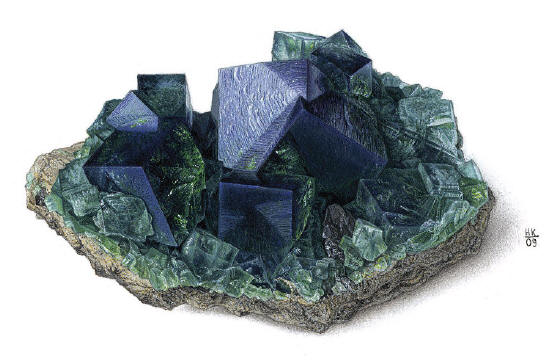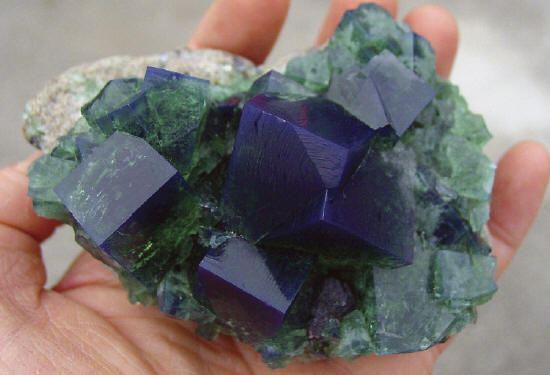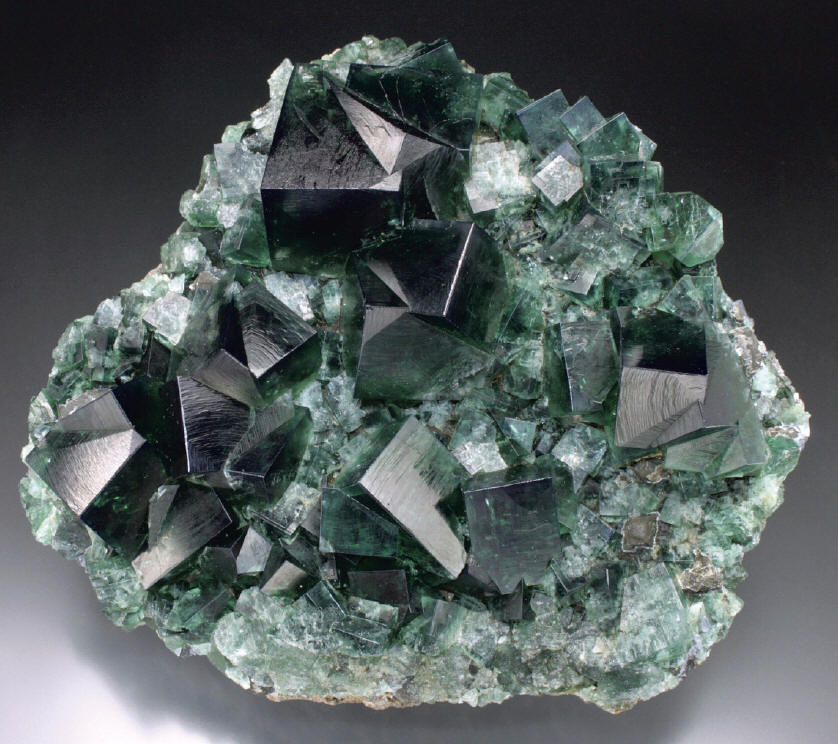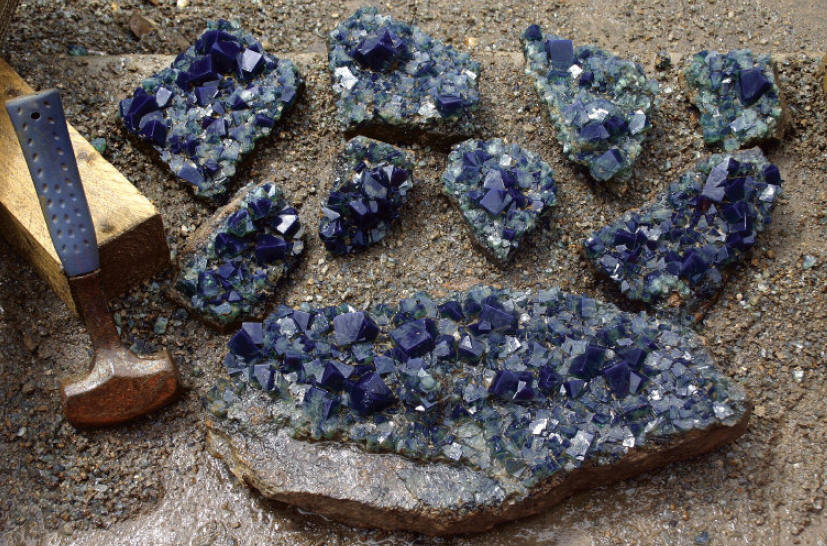
Superb specimen of fluorite with galena on white quartz from the Rat Tail Pocket, size 17 cm. UKMV specimen. J. Fisher photo.
During the summer of 2002 webegan another crosscut on the east sideof the adit to the north of the BlackSheep Pocket. This drift, known asthe “East Crosscut”, intersected
thenorthern edge of the Black Sheep zone offlats. A few good specimens were foundin this crosscut, but generally the qualitydid not justify spending much timeand money on expanding the drift. Diggingeventually intersected the northernedge of the Black Sheep Pocket, but dueto the dangerous and unstable nature ofthe back (roof) in this area, little mininghas been done since.
Simultaneous with driving the neweast adit, work was continued at the faceof the original adit driven by CMaMC.


The same specimen from the Jewell Box Pocket on painting and photo, both in daylight.Painting: Water-colors and coloured pencils on paper, 2009, painted in naturalsize (1:1), ? copyright by Hildegard K?nighofer. R. Brandstetter collection and photo.
On mid-summer’s day (2001) a cavity in one of the flats was discovered along themain adit, about 10 meters north of theoriginal Black Sheep Pocket opening.
Specimens from this area, appropriatelynamed the “Solstice Pocket”, thoughnot numerous were of very high quality,showing very little delustering or corrosionsometimes typical of fluorite fromother areas of the mine. This pocket wasessentially worked out by the end of the2001 season, and now marks the pointwhere the east adit loops back and rejoinsthe main adit.

Superb specimen from the Jewell Box Pocket, size of specimen 15 cm. UKMV specimen. J. Fisher photo.
The West Crosscut Pocket Zone
Late in the 2001 season an exploratorydrift heading west from themain adit opposite the Black SheepPocket was started to see if flats existedto the west of the main vein as well as tothe east. After a couple of blasts, greenfluorite specimens were found here aswell. This area is now known as the“West Crosscut” has proven to be themost productive area of flats yet found inthe mine. Unlike the Black Sheep zone tothe east, the area around the WestCrosscut has undergone extensive replacementby iron carbonates ratherthan silica. These have oxidized creatinga heavily iron stained gossan-like matrixfor the fluorite in much of the area. Specimensfrom the West Crosscut are generallyof a higher quality than those fromthe Black Sheep zone, and the matrix ismore broken up, allowing easier extractionby hand. Void spaces in the flatswere filled with a very sticky and tenaciousmud that required removal, andmade collecting a slow and very messyjob.

Freshly collected specimens from the Jewell Box Pocket. J. Fisher photo.







 YueGongAnBei 44051102000467
YueGongAnBei 44051102000467


 |
|